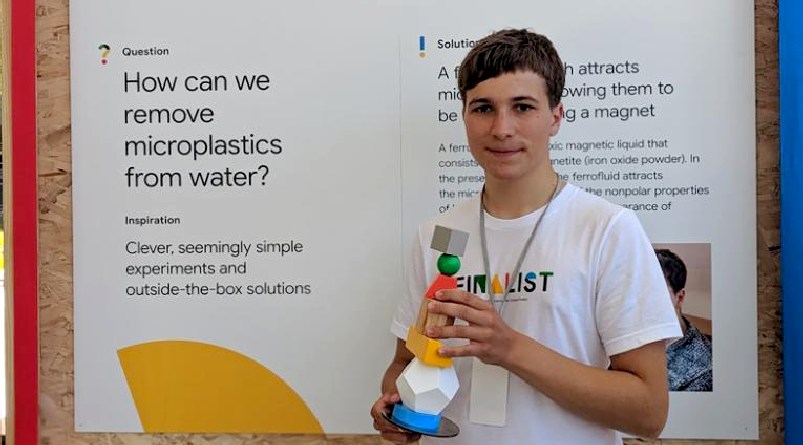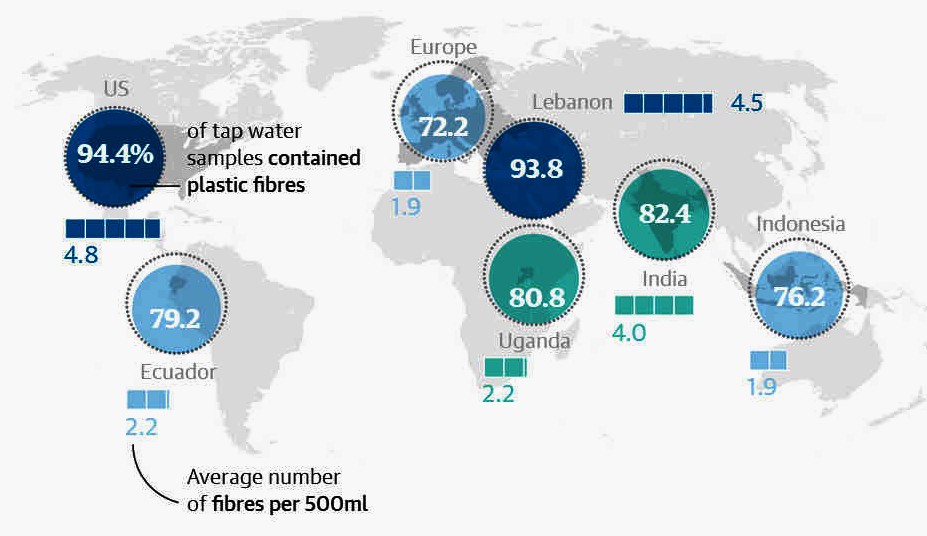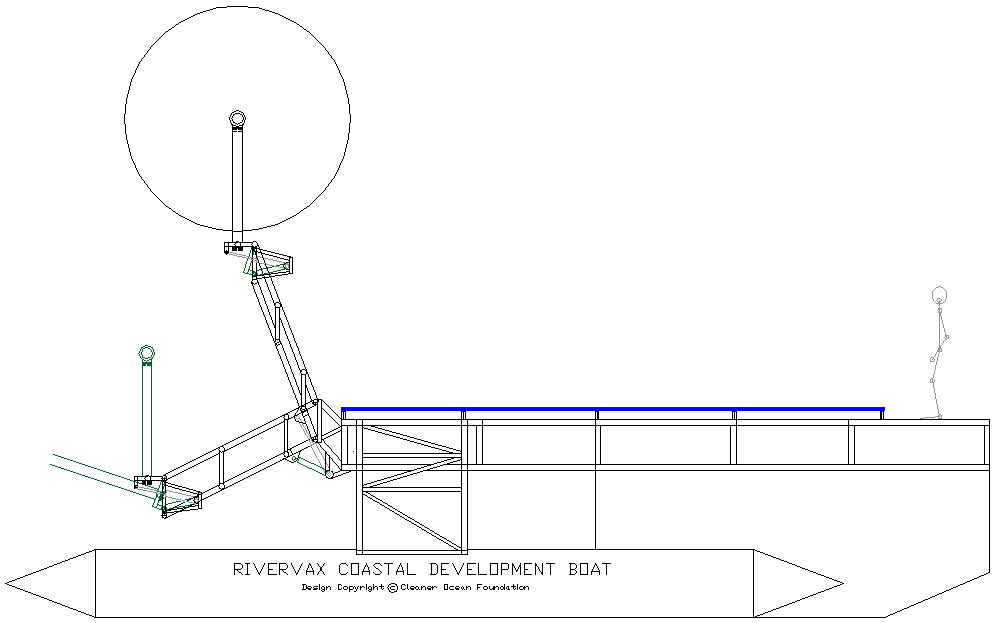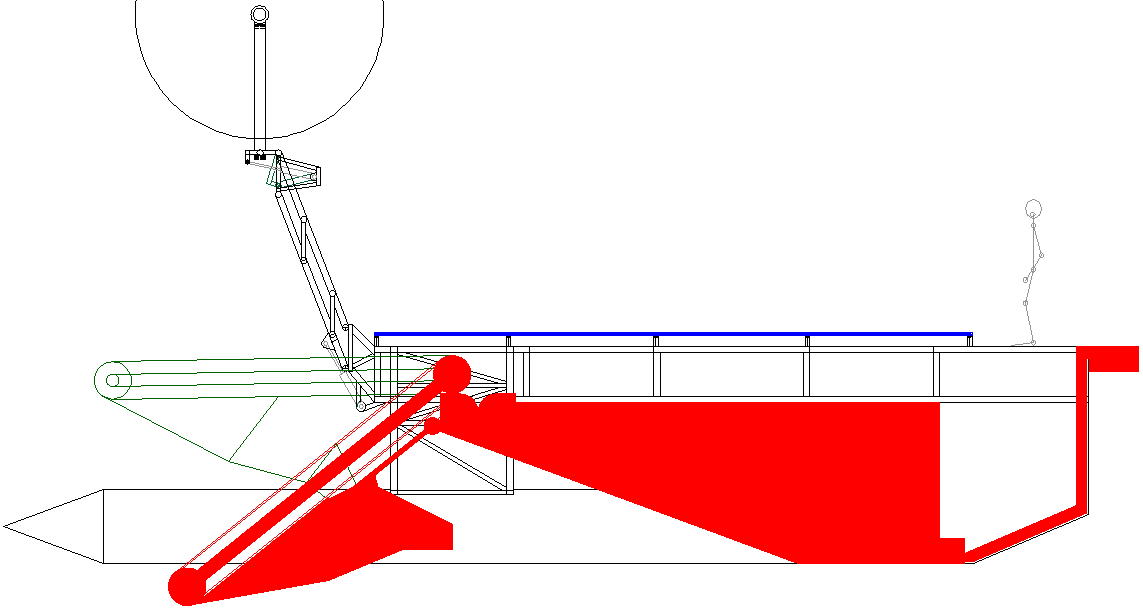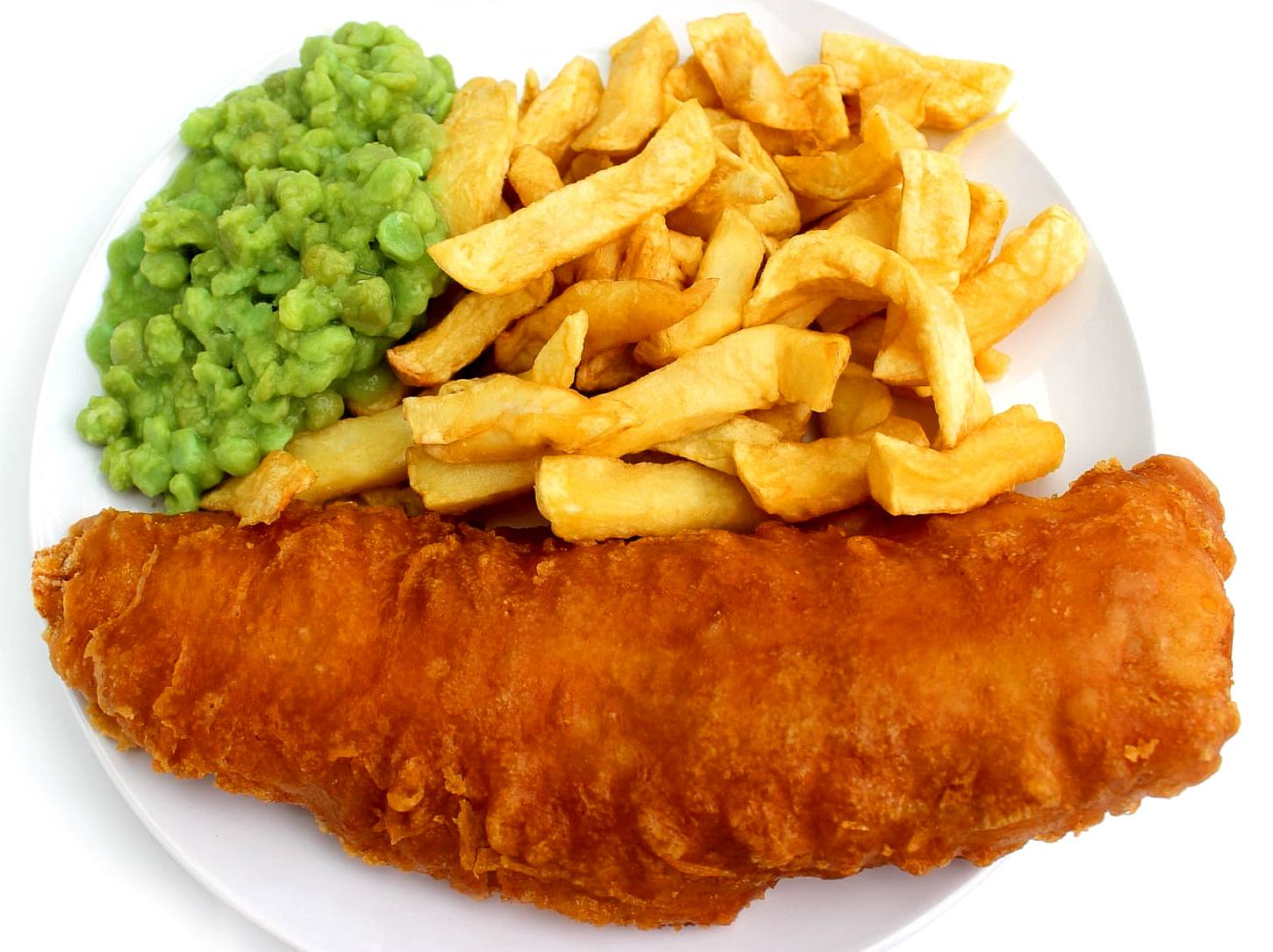|
SEA & RIVER VAX microfibers
Please use our A-Z INDEX to navigate this site, where page links may lead to other sites
|
||||
|
Combined plastic discharge coupling and survey drone landing pad. |
|
150 ton holding tank for collected ocean or river waste.
|
|
|
|
|
5083 alloy hull for corrosion free service life. |
|||
|
|
|
|||
|
Large 220 m2 area of photovoltaic panels as arrays that track the sun autonomously. |
Up to 20kW wind turbines boom mounted to track wind autonomously. |
|||
|
|
|
|||
|
Trimaran hull configuration for stability at sea. |
Modular construction to simplify production. |
|||
|
|
|
|||
|
|
|
Large (patent) 2-stage 13.5 meter filter-collector head to vacuum up plastic particles - with adjustable operating height and safety features to protect marine life. |
||
|
In addition to RiverVax boats, the Cleaner Ocean Foundation is looking at other ways to remove microfibers from rivers, such as to compliment the SeaVax, the Ocean Cleanup Project of Boyan Slat and other projects.
The Foundation has thought of a way to remove significant quantities of microfiber waste from rivers that would otherwise end up in shellfish and plankton.
CLOTHING
The most obvious way of dealing with microfibers is to stop them from getting in the rivers in the first place. Be careful when buying clothes to choose fabric with more cotton and wool. Other natural fibres include silk. Much of the clothing we wear today is made of plastic like polyester, a poly-blend.
If we were to grow more cotton and farm more sheep for their wool, then all we have to do is persuade clothing manufacturers to change from plastics to natural fibers.
The way to do that is buy only cotton and woolen garments - and that is where price comes in.
MOTIVATED - According to his website, Fionn is motivated and enthusiastic, enjoys innovation and cool science, especially when things go bang! He has entered the BT Young scientist competition many times and loves inventing and tinkering at home. He has won awards with his science projects at both national and international science fairs and he worked at Schull Planetarium where he shares knowledge with others. Fionn can use the graphic design software Adobe Illustrator and Adobe Photoshop. He also codes in C++ and thinks it is really interesting to automate his home with Arduino and Raspberry Pi projects.
FUNDING RESEARCH
Regrettably there are not the resources to divert from other developments with the present limitations on funding. This may change as biodiversity and food security become more important on the UN and G20 agendas. With students like Fionn Ferreira (above) looking at the subject, a solution may well be in the pipeline.
The system is likely to be the subject of third party patent filings in years to come. The Foundation is being forced to explore the commercial arena, but is bound by Non-Disclosure Agreements that prevent publication. You can learn more if you are agreeable to binding Confidentiality arrangements.
Meantime we hope that other innovators come up with the same solution independently, eliminating the need for the Foundation to divert resources and work toward turning a concept into a patent-able formula. Fortunately, in a great many instances - Great Minds Think Alike.
GREAT MINDS THINK ALIKE
Did you know that the light bulb was invented simultaneously on both sides of the Atlantic? Yes, it's true. Joseph Swan invented the light bulb in the United Kingdom, just marginally ahead of Thomas Edison in the United States. Eventually, this led to a Courtroom battle where the Judge ordered the two inventors to work together and bury their differences as to inventorship.
Clothing fibers are often too small to be filtered out at wastewater treatment plants and are discharged into streams, rivers, lakes, and eventually the ocean. “Plastic particles smaller than 5 mm pose a massive environmental and human health risk when they enter our waterways,” said Abby Barrows, a marine research scientist with Adventure Scientists and College of the Atlantic, who has analyzed thousands of water samples from around the world for microplastics.
WHAT ELSE ?
Funding dependent for 2020 - or as soon as possible thereafter, the plan is to float a budget 12 meter coastal test rig, building on the Foundations experience.
All these developments depend on funding. At this point in time the Foundation cannot lead a bid because of restrictive rules. This is an important sticking point that policy makes worldwide should think about addressing, where quite often the solution to a problem does not come from academics or existing corporations.
In addition, where the Foundation does not have the funds to apply for patents, or otherwise invest in R&D (until funded to do so) where they are a charity (not for profit), technology that might clean oceans and rivers of plastic pollution will not be developed. Biodiversity and Food Security hang in the balance with the United Nations failing on all fronts using a conventional approach.
Funding being the main limitation as to the speed of development, lobbying is seen as vital to further research as a more dedicated drive toward support for ocean cleaning projects. At this time volunteers support the project with generous help and free facilities.
PATENT PENDING - The filtration module, cargo hold and offloading mechanism is shown in red in outline form. The system consists of several integrated components, incorporating motors, pumps, hydraulics, electronics and computer programs - all to be powered by energy from nature - if we are to avoid more greenhouse gas emissions. Note that this is the design for the 12 meter coastal development rig, rather than the 45 meter full size craft. Copyright © diagram Cleaner Ocean Foundation. All rights reserved.
PLASTIC SOUP FOUNDATION - Amsterdam, 8 May 2017
It has long been known that microplastics in cosmetics make their way into our water supply, but this research shows that clothing fiber pollution is significantly greater. It appears that 34.8% of primary microplastics released by machine washing synthetic clothes ultimately ends up in the environment. Maria Westerbos, director of the Plastic Soup Foundation: “Ultimately, these microfibers wind up on our plates.” Synthetic fibers have been found in
plankton, both in farmed and in wild mussels, in sea salt and even in honey. The number of animal species that suffer from plastics that make their way into the environment has gone up to 1220 in 2017, and continues to rise. Westerbos: “It can have myriad consequences: ranging from a worsened condition and internal wounds to starvation and dehydration.”
In 2016, the results were published of a unique sample measurement of microfiber residue in the air in Paris. Between 2 to 355 microfibers were counted per day per square metre; in the city center this number was almost double that of suburbs. Of the clothing fibers that were found, 29% consisted partly or fully of plastic. “The consequences for public health are massive”, Westerbos believes. “The microplastics could emit harmful chemicals deep in the lungs and could even be spread through the body through our circulation, which means the micro particles could even reach unborn babies through the placenta.”
Plastic Soup Foundation (PSF) is the communications partner of the Life+ Mermaids consortium. This three-year project saw thorough research performed into fiber loss in washing machines, as well as successful experiments – a world first – with bio-based coatings made from
shrimp (chitosan) and plants (pectin), which managed to reduce fiber loss by a spectacular 50%.
Although all the grassroots solutions we have been seeing are fantastic, it is even more important that we see change in the clothes themselves. Instead, the only development we can see is that more and more brands are creating clothing from dangerous ocean plastics, which disintegrate even quicker. This has only made the problem bigger. Only Patagonia and G-Star seem serious about wanting to tackle the problem.”
THE
GUARDIAN 14 FEBRUARY 2017
More than a century ago, in 1907, another Belgian, Leo Baekeland, a graduate of Ghent University, invented bakelite. It was, he later admitted, something of an accident, but this welcome development ushered in a colourful new age of plastics. Until then, we had, at great cost and effort, been manipulating products out of natural materials such as shellac, derived from beetle shells. (Charles Mackintosh’s first “mac” – which used derivatives of tar and rubber – must have been pretty pungent in a downpour.) Baekeland, who had moved to the US, saw commercial potential in an entirely synthetic replacement for shellac that would be suitable for mass production. Bakelite was lightweight, affordable, malleable and safe, but perhaps the greatest thing about the plastic Baekeland created, and those that followed, was its durability.
Microplastics – which range in size from 5mm to 10 nanometres – come from a number of sources. One culprit is “nurdles”, the raw plastic pellets shipped around the world for manufacturing, easily lost during transportation (in 2012 a typhoon spilled millions from a ship in Hong Kong). Recently, the spotlight has been on so-called microbeads, tiny plastic balls found in some cosmetic facial scrubs and toothpaste (many governments, including the UK’s, have moved to ban them). Like microfibres – the threads from synthetic clothes lost during laundry, and rubber debris from vehicle tyres – these tiny pieces of plastic are too small to be filtered out of our wastewater systems, and huge quantities end up in the sea. But it’s the single-use plastics for packaging, more than a third of everything we produce, that present the greatest problem. While many plastics don’t biodegrade, they do photodegrade – UV exposure eventually breaks all those plastic bottles and bags down into tiny pieces, which, in common with microbeads and fibres, potentially leach toxic chemical additives – PCBs, pesticides, flame retardants – put there by manufacturers. These tiny particles look like food to some species, and, last November, new research showed that common plastics attract a thin layer of marine algae, making them smell like nutritious food.
ALTERNATIVE CULLING - Health Service budget cuts mean that social care in the community is suffering, so that the elderly sometimes die from otherwise minor ailments from complications. The fact is that generally humans are living longer from better diets, housing and medicines. That is why the retirement age has been raised. Spending on cancer research might go to offset the rising toxicity levels of wild fish and consequential human suffering. The EU have pledged sums on their Horizon Europe budget for cancer research.
It’s important not to overstate the risks before they’re fully understood. The UN’s Food and Agriculture Organisation pointed out in 2014 (pdf) just how reliant we have become on seafood as a source of protein – an estimated 10-12% of the global population relies on fisheries and aquaculture for their livelihood. Per capita fish consumption has risen from 10kg in the 1960s to more than 19kg in 2012, and seafood production is annually increasing at a rate of 3.2%, twice the world population growth rate. In other words, demand for seafood is increasing, just as its future viability is at risk. Something has to give – and it is increasingly clear that has to be our reliance on throwaway plastics.
OCEAN CLEANUP PROJECTS
* Adidas * Algalita research foundation * Aliance to end Plastic Waste * Boyan Slat's ocean booms * 4Ocean recycled plastic bracelets * Earth Day ocean plastic fact sheet * Fionn Ferreira's ferrofluid extraction of microplastics * Junk Raft - plastic expedition * Plastic Oceans Canada * Plastic Oceans Org * Seabin * SeaVax autonomous drones * Surrey University PIRATE & Triton
LINKS & REFERENCE
https://www.theguardian.com/lifeandstyle/2017/feb/14/sea-to-plate-plastic-got-into-fish https://www.plasticsoupfoundation.org/en/2017/06/fibers-from-synthetic-clothing-disastrous-for-mankind-and-the-oceans/ https://www.plasticpollutioncoalition.org/pft/2017/9/6/microfibers-the-plastic-inside-us
WHAT DRIVES US - It is pictures like this, of a wash of plastic floating in and out with the tide that compels us to do what we can to help clean Ocean A, because we know there will never be an Ocean B and that the miracle of life on earth is something worth preserving.
|
||||
|
ABS - BIOMAGNIFICATION - CANCER - CARRIER BAGS - COTTON BUDS - DDT - FISHING NETS - HEAVY METALS - MARINE LITTER - MICROBEADS MICRO PLASTICS - NYLON - OCEAN GYRES - OCEAN WASTE - PACKAGING - PCBS - PET - PETROLEUM - PLASTIC - PLASTICS - POLYCARBONATE POLYOLEFINS - POLYPROPYLENE - POLYSTYRENE - POLYTHENE - POPS - PVC - SHOES - SINGLE USE - SOUP - STRAWS - WATER
Please use our A-Z INDEX to navigate this site, where page links may lead to other sites
|
||||
|
This website is provided on a free basis as a public information service. copyright © Cleaner Oceans Foundation Ltd (COFL) (Company No: 4674774) 2019. Solar Studios, BN271RF, United Kingdom. COFL is a company without share capital.
|
||||
